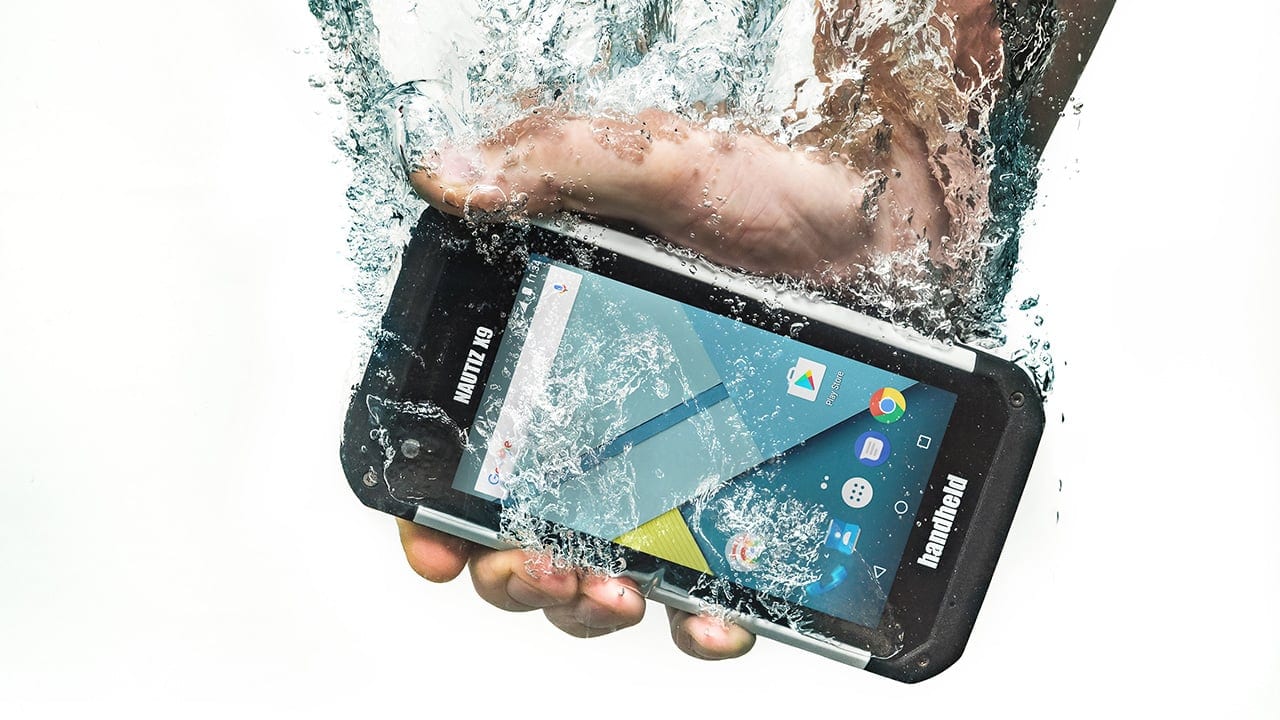Specs matter. At Handheld we like to provide a lot of detail on exactly which rugged standards our devices meet. Ingress protection (IP) ratings are one of the most effective and commonly used standards to convey ruggedness against dirt and water.
| First digit Protection against dust |
Second digit Protection against water |
| 0: No protection | 0: No protection |
| 1: Protection against solids up to 50 mm | 1: Protected against dripping water |
| 2: Protection against solids up to 12 mm | 2: Protected against dripping water (tilted) |
| 3: Protection against solids up to 2.5 mm | 3: Protected against water spray |
| 4: Protection against solids up to 1 mm | 4: Protected against splashing water |
| 5: Protection against dust; limited ingress | 5: Protected against water jets |
| 6: Totally protected against dust | 6: Protected against a nozzle under pressure |
| 7: Protected against immersion (1 meter for 30 min) | |
| 8: Protected against submersion (at depth, under pressure) |
All Handheld devices are dust-tight, which means that the first digit of the IP rating will always be a “6”.

The second digit of the IP rating is where things get interesting. You’ll see that a “5” means that a device can withstand water jets. That’s pretty rugged. Think about your working environment, do you often require more than that? For most of our customers, the answer is “no.” Rarely do we find that our customers need IP67 or IP68 which signifies protection against actual immersion in water. There’s a significant engineering leap—usually requiring additional product cost—needed to move a device from IP65 to IP67. It’s more complicated to seal a device with multiple ports and a field-replaceable battery to that standard (For the most part, devices aren’t certified to IP66, since IP66 standards require near IP67-level sealing. If they need IP66, manufacturers usually just go ahead for full IP67 testing.)
Some customers though, do require a device to be capable of withstanding immersion. Foresters, Land Surveyors, technicians and scientists working in marine environment, all might see their devices accidentally submerged on occasion. For them, IP67 makes sense.

So what about IP68 then? One important thing to understand is that listing a device as “IP68” alone is not enough. The standard for IP68 requires that the manufacturer specify the time and depth of the immersion test. IP67 is one meter for 30 minutes. IP68 needs to be more than that, but it is up to the manufacturer to designate exactly how much longer/deeper their devices were tested. Be sure to ask for that time and depth to understand what you’re actually getting.
You’ll see that IP specs aren’t necessarily an area where more is better. By understanding your deployment scenario, you’ll be better equipped to decide for yourself which testing standard you require. This will ensure that you’ll get a device rugged enough to survive your environments, but you aren’t paying for ruggedness you don’t need.





